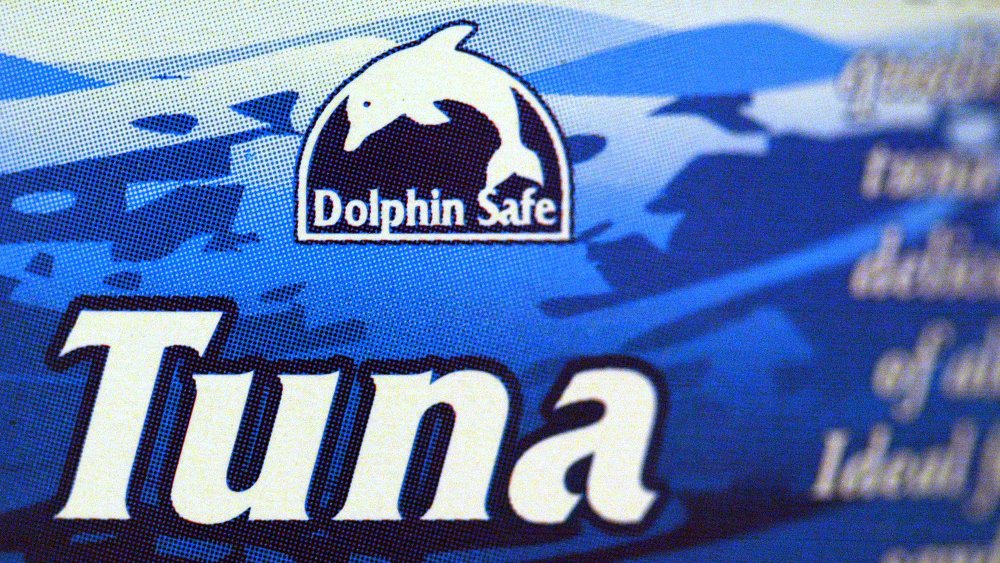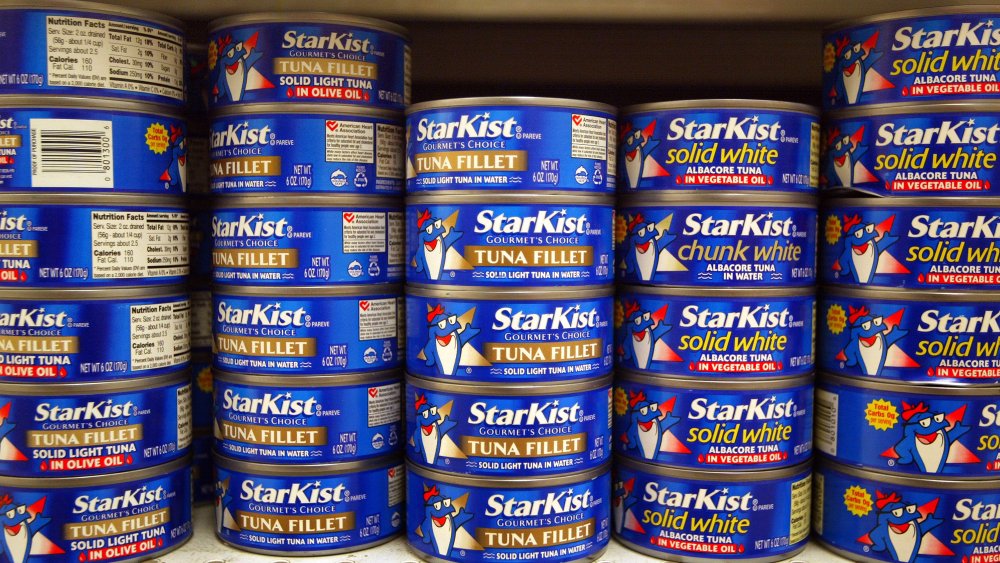Is 'Dolphin-Safe' Tuna Really Safe For Dolphins?
Spotted dolphins are almost always spotted with large tuna in the eastern Pacific Ocean. That also holds true for spinner dolphins and tuna. PhD candidate Matthew Leslie of the Scripps Institution of Oceanography in La Jolla, California observed that these interspecies pals "have a special bond," via Living on Earth. Does the chicken of the sea naturally make a great wing man? Somebody ought to ask dolphins about that. Unfortunately, fishermen have bigger fish to fry, namely the large tuna.
Fishermen capitalize on the closeness of these animals by tracking the easier-to-spot dolphins in order to catch tuna. This might evoke thoughts of dolphins weeping tears that disappear into the vastness of the ocean while their friends get dragged out of the proverbial frying pan, dropped into the fire, and then crammed into cans. However, dolphins can also get caught in the crossfire. This poses a conundrum for humans, who don't want to harm dolphins but absolutely want to devour dolphins' dear friends. In theory, legally mandated safeguards keep dolphins safe, but in practice, those "dolphin-safe" labels on tuna cans might be lacking in accuracy.
Dolphins and tuna are in the same boat
As detailed by Swarthmore College's Global Nonviolent Action Database, "dolphin-safe" tuna requirements emerged in the 1980s in response to ravages wrought by purse seine nets. Used in the Eastern Tropical Pacific Ocean since the 1950s, purse seine nets are giant walls of netting which can close at the bottom like a purse to encircle entire schools of fish, per the National Oceanic and Atmospheric Administration. The tactic has killed millions of dolphins and also wreaks havoc on sea turtles, which get entangled in the nets or crushed under the weight of the haul.
You might assume that the dolphin-safe label cans is a guarantee that the tuna wasn't caught using a method that's deadly to dolphins. But a 2015 Forbes article by Cato Institute trade policy analyst K. William Watson claims those labels only indicate that "one particular fishing method was not used in one particular part of the ocean." Some "dolphin-safe" labels might not guarantee that much. CBS reports that in a 2019 lawsuit filing, Bumble Bee Foods was accused of using a deceptive "alternative 'Dolphin Safe logo" while catching tuna in ways that kill or harm large numbers of dolphins.
Two other companies, Chicken of the Sea and StarKist, were also sued for allegedly misleading customers about their practices. Plaintiffs claimed that the companies didn't physically separate "dolphin-safe" tuna from those which didn't meet the criteria. So dolphins and tuna may be even more inseparable than people realize.

